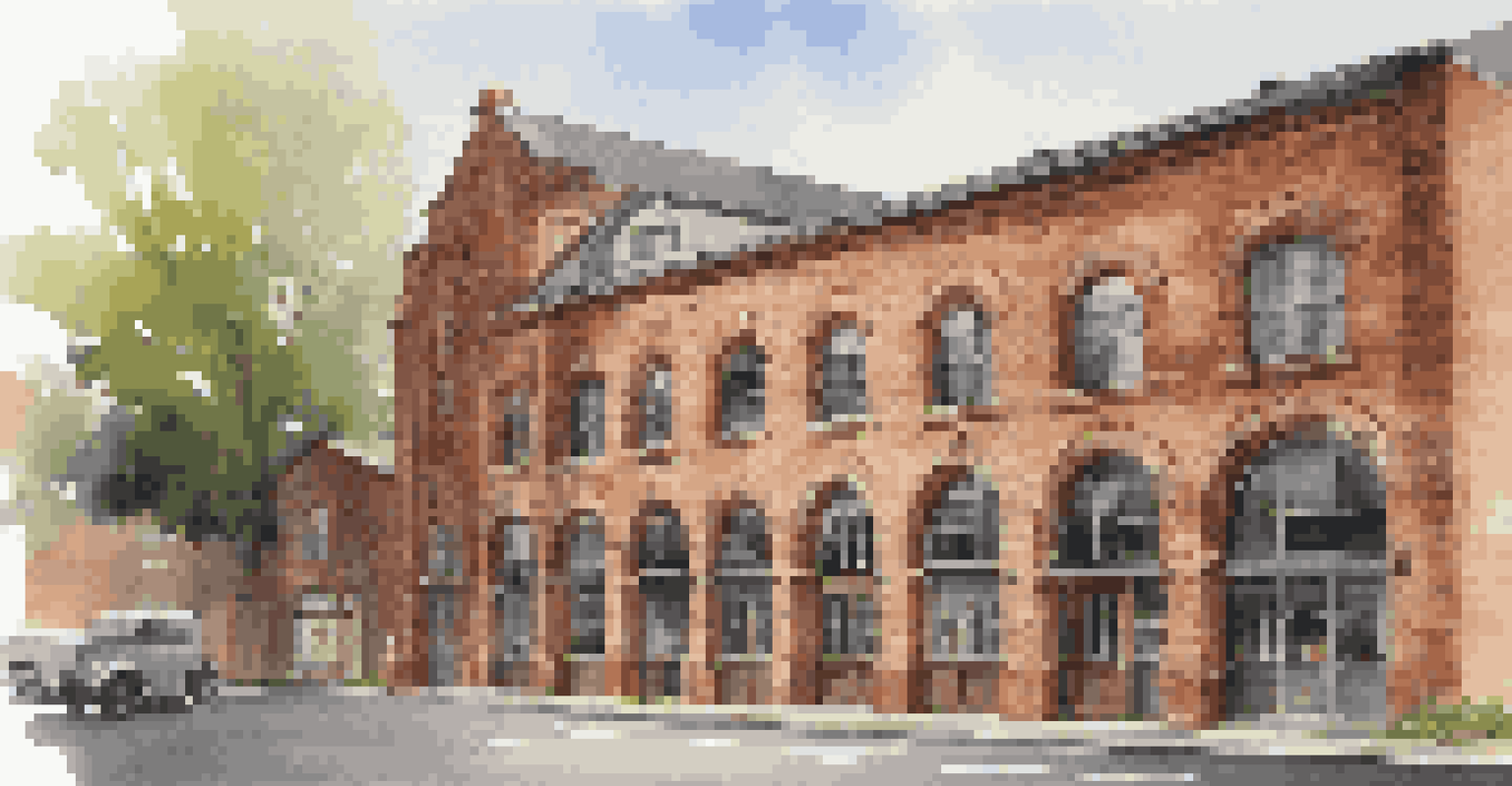The Impact of Local Culture on Historic Property Renovations

Understanding Local Culture and Its Importance
Local culture encompasses the traditions, values, and practices that define a community. When it comes to historic property renovations, this culture plays a crucial role in shaping how a property is restored or adapted. A deep understanding of local culture helps preserve the essence of a neighborhood while ensuring that renovations resonate with the people who live there.
Preservation is a form of sustainability that respects the past while enhancing the future.
For instance, a historic building in a culturally rich area may have architectural features that reflect local heritage. Renovating such a property without considering these elements could lead to a loss of identity for the community. Thus, recognizing the significance of local culture can guide renovation efforts that honor both history and contemporary needs.
Moreover, engaging with local residents during the renovation process can foster a sense of community ownership. This collaboration helps ensure that the renovated property serves the collective interests of the neighborhood, creating spaces that are both functional and culturally relevant.
Preserving Architectural Heritage Through Culture
Architectural styles often tell the story of a place's history and culture. When renovating historic properties, it is essential to maintain the architectural integrity that reflects local traditions. For example, a Victorian-style house in a town known for its Victorian architecture should retain its unique features, such as ornate woodwork and stained glass.

Failure to preserve these architectural elements can lead to a homogenized look that strips away the character of a neighborhood. Renovators should conduct thorough research on local architectural styles to ensure that their updates enhance rather than detract from the building's historic charm. This approach helps maintain a visual narrative that connects the present with the past.
Cultural Understanding in Renovations
Deep knowledge of local culture is essential to ensure that historic renovations resonate with the community and preserve its identity.
Additionally, using locally sourced materials can further reinforce the link between the property and its cultural context. By integrating materials that are characteristic of the area, renovations not only respect the original design but also support local businesses and sustainable practices.
Community Engagement in Renovation Projects
Engaging the local community during renovation projects can yield valuable insights and foster goodwill. When residents are involved in the decision-making process, they are more likely to support the renovations and feel a sense of pride in the outcome. Public meetings, surveys, and workshops are effective ways to gather input and gauge community sentiment.
Culture is the soul of a community, and its preservation is essential for the identity of any neighborhood.
For instance, a historic theater renovation might involve local artists and performers to create a space that meets their needs while honoring the building's history. This collaborative spirit not only enriches the renovation process but also ensures that the final product reflects the values of the community.
Moreover, successful community engagement can lead to innovative ideas that enhance the functionality of the property. By listening to local voices, renovators can create spaces that are not only beautiful but also serve as vibrant centers for cultural activities, further integrating the property into the community fabric.
Balancing Modern Needs with Historic Preservation
While preserving historic properties is vital, it is equally important to adapt them for modern use. This balancing act requires thoughtful consideration of how to incorporate contemporary amenities without compromising the building's historic character. For example, updating electrical systems and plumbing can enhance safety and comfort while maintaining the property’s aesthetic appeal.
Finding this balance often involves creative problem-solving. Renovators might use subtle design elements, such as hidden modern features or complementary finishes, to ensure that the updates blend seamlessly with the historic aspects of the property. This approach allows for the preservation of the past while meeting the needs of present-day users.
Community Engagement is Key
Involving local residents in the renovation process fosters ownership and results in spaces that reflect the community's values and needs.
Ultimately, successful renovations strike a harmony between old and new, demonstrating that historic properties can evolve while still honoring their roots. By carefully considering modern needs, renovators can create spaces that are both functional and deeply connected to their historical significance.
The Role of Local Regulations in Renovation
Local regulations often play a significant role in guiding historic property renovations. Many communities have preservation ordinances that dictate how properties can be modified, ensuring that alterations align with the area's cultural and historical significance. Understanding these regulations is crucial for renovators to avoid potential legal issues and fines.
In some cases, these regulations might require specific materials or design elements to be used in renovations. For example, a historic district may mandate the use of original window styles to maintain the neighborhood's visual integrity. Navigating these rules can be challenging, but they serve an essential purpose in safeguarding the community's heritage.
Additionally, engaging with local heritage organizations can provide valuable resources and support. These organizations often have expertise in navigating regulations and can offer guidance on best practices for renovations that honor local culture while remaining compliant.
The Economic Impact of Culture-Driven Renovations
Renovating historic properties with a focus on local culture can have a positive economic impact on the community. By preserving and enhancing the character of a neighborhood, such renovations can attract tourism and stimulate local business. Visitors are often drawn to areas rich in history and culture, creating opportunities for shops, restaurants, and arts venues.
Moreover, culturally sensitive renovations can increase property values. Homes and businesses that reflect the unique character of their surroundings tend to be more desirable, leading to a boost in the local real estate market. This increase in value can benefit property owners and generate additional tax revenue for the community.
Balancing Old and New
Successfully renovating historic properties requires a thoughtful blend of modern amenities with the preservation of their historical character.
Investing in culture-driven renovations fosters a sense of pride among residents, encouraging them to take an active role in maintaining their neighborhood's unique identity. This collective effort can create a vibrant, thriving community that attracts both residents and visitors alike.
Case Studies: Successful Culture-Inspired Renovations
Examining successful case studies can provide valuable insights into the impact of local culture on historic property renovations. For example, the revitalization of a historic downtown area often showcases how thoughtful renovations can breathe new life into a community. These projects typically involve collaboration between architects, local businesses, and residents to create spaces that reflect the area's heritage.
One notable example is the restoration of an old mill into a mixed-use space that honors the industrial history of the region while offering modern amenities. By incorporating elements that celebrate the mill's past, such as exposed brick and original machinery, the renovation creates a unique atmosphere that attracts visitors and residents alike.

Such case studies demonstrate that when renovations align with local culture, they can transform properties into vibrant community hubs. By learning from these successful examples, future renovations can continue to honor the past while paving the way for a culturally rich future.